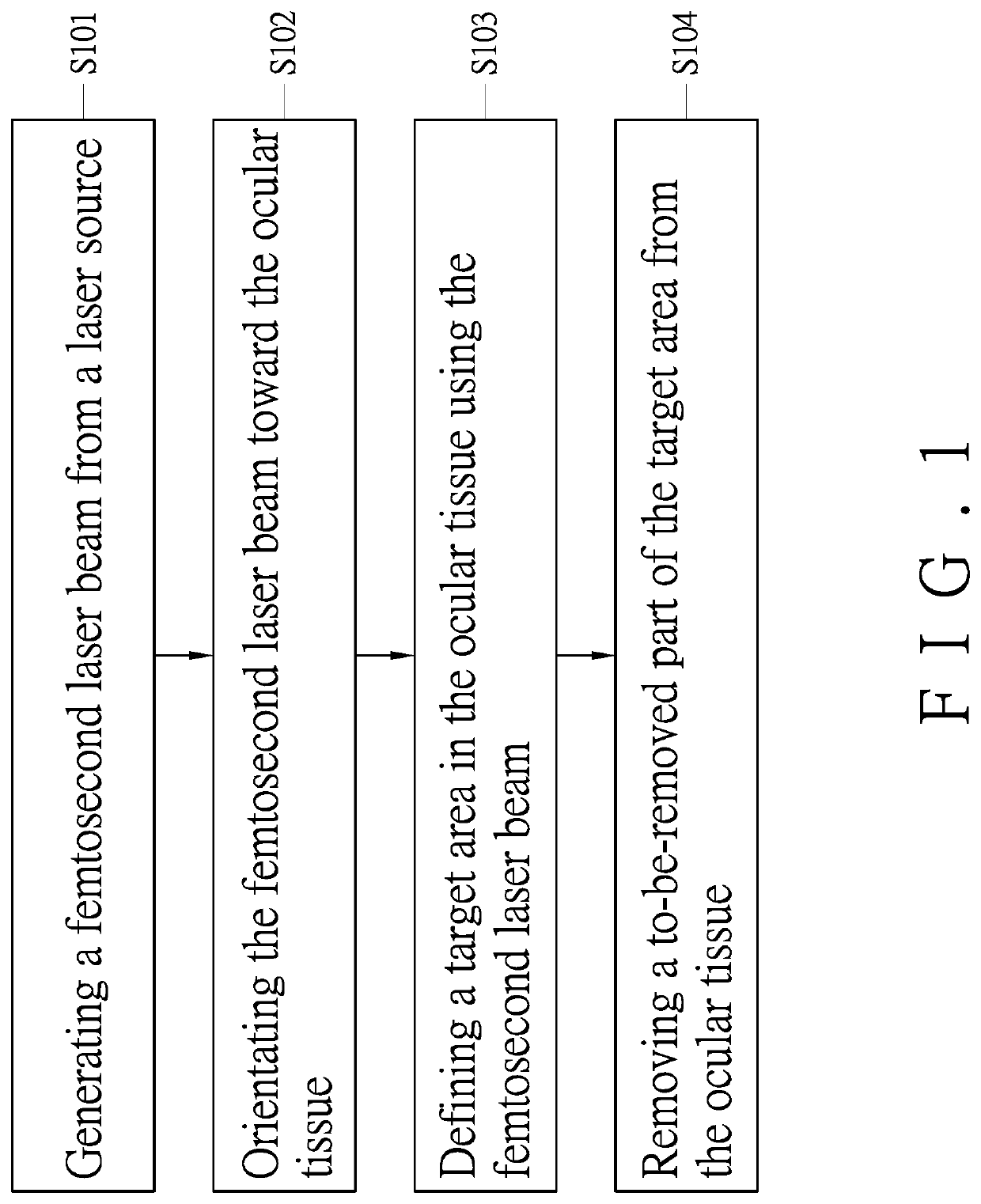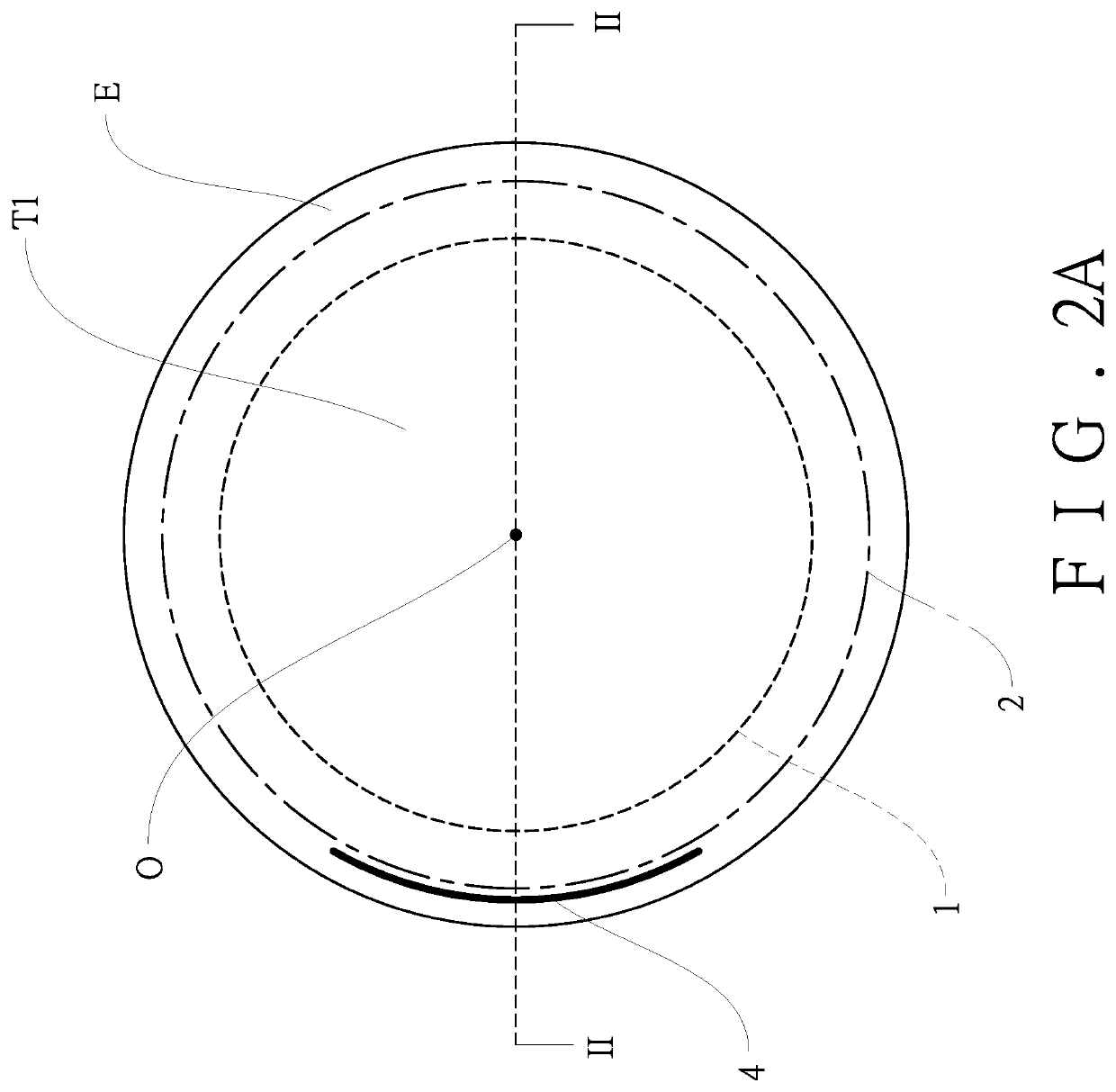Method and apparatus for treating ocular tissue
a technology ocular tissue, which is applied in the field of methods and an apparatus for treating ocular tissue, can solve the problems of corneal strength and the vulnerability of the treated cornea to intraocular pressure, and achieve the effect of maximising the postoperative strength of the treated cornea
- Summary
- Abstract
- Description
- Claims
- Application Information
AI Technical Summary
Benefits of technology
Problems solved by technology
Method used
Image
Examples
Embodiment Construction
[0023]For further illustrating the means and functions by which the present invention achieves the certain objectives, the following description, in conjunction with the accompanying drawings and preferred embodiments, is set forth as below to illustrate the implement, structure, features and effects of the subject matter of the present invention. Unless otherwise noted, like elements will be identified by identical numbers throughout all figures and repeated description related thereto is omitted.
[0024]First, please refer to FIG. 1 for a method for treating ocular tissue according to one embodiment of the present invention. In the description below, some embodiments of the present invention will be discussed with reference to a cornea of an eye as the ocular tissue to be treated. However, the use of the disclosed method is not limited thereto. For example, the disclosed method for treating an ocular tissue may be alternatively used for other ocular tissues, such as a lens of an eye...
PUM
| Property | Measurement | Unit |
|---|---|---|
| thickness | aaaaa | aaaaa |
| thickness | aaaaa | aaaaa |
| thickness | aaaaa | aaaaa |
Abstract
Description
Claims
Application Information
 Login to View More
Login to View More - R&D
- Intellectual Property
- Life Sciences
- Materials
- Tech Scout
- Unparalleled Data Quality
- Higher Quality Content
- 60% Fewer Hallucinations
Browse by: Latest US Patents, China's latest patents, Technical Efficacy Thesaurus, Application Domain, Technology Topic, Popular Technical Reports.
© 2025 PatSnap. All rights reserved.Legal|Privacy policy|Modern Slavery Act Transparency Statement|Sitemap|About US| Contact US: help@patsnap.com



